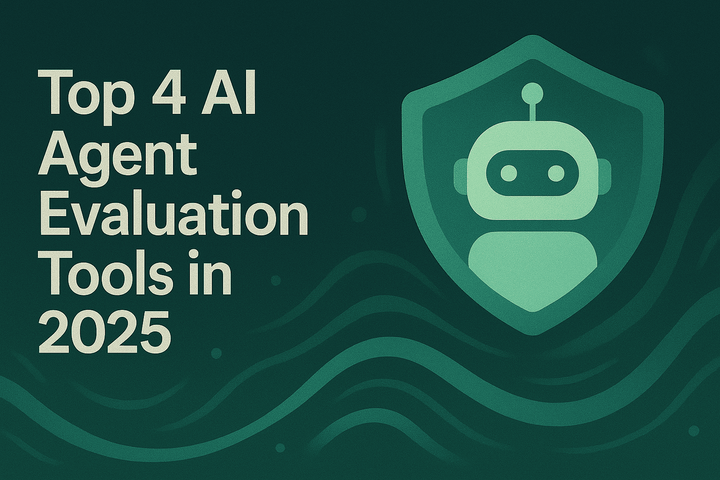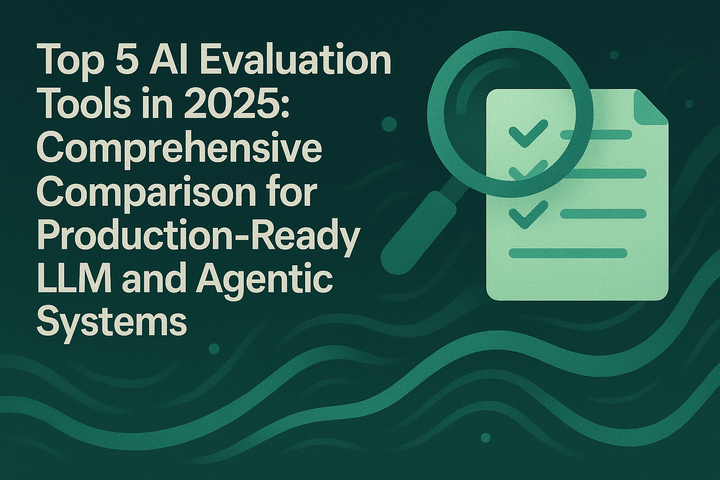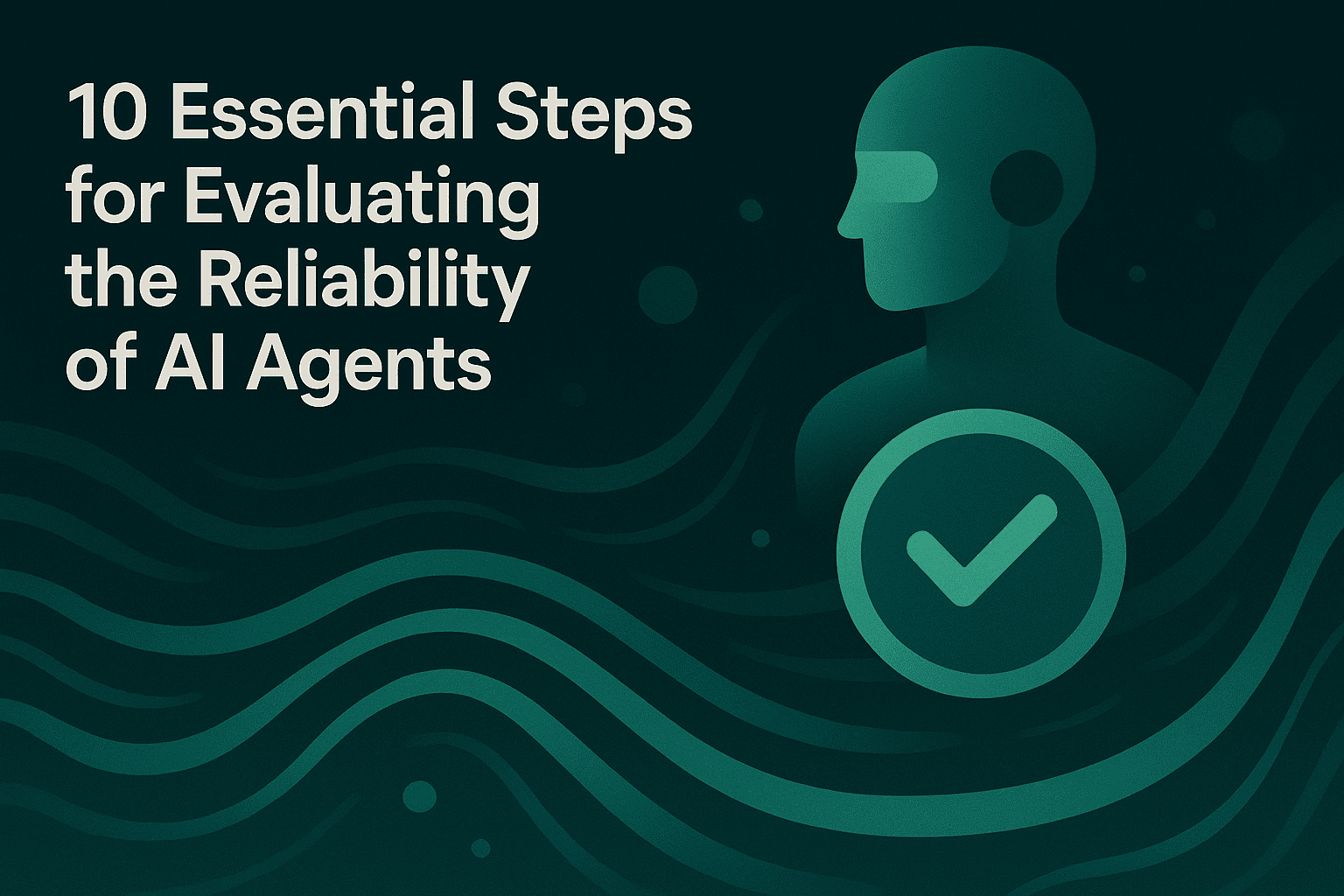A Step-by-Step Guide to Building Robust Evaluation Datasets for AI Agents

TL;DR
Building robust evaluation datasets is critical for measuring and improving AI agent performance. This guide covers the complete lifecycle of dataset creation—from defining objectives and sourcing data to curating multi-modal examples and implementing continuous improvement workflows. Quality evaluation datasets enable teams to run meaningful evaluations, catch regressions before deployment, and align agent behavior with user expectations. By combining production logs, synthetic generation, and human-in-the-loop workflows, teams can create datasets that reflect real-world complexity and drive measurable improvements in AI quality.
Why Evaluation Datasets Are the Foundation of AI Quality
Evaluation datasets serve as the benchmark for measuring AI agent performance across different scenarios, user intents, and edge cases. Without high-quality evaluation data, teams cannot reliably assess whether their agents are improving or regressing with each iteration.Research demonstrates that robust evaluation datasets should include at least 30 evaluation cases per agent, covering normal operations, complex scenarios, and edge cases. The challenge for teams building AI agents is creating datasets that accurately represent the full spectrum of real-world user interactions while maintaining balance across multiple dimensions.
AI observability provides the foundation for dataset creation by capturing production traces that reflect actual user behavior. These traces become the raw material for building high-quality evaluation datasets that drive systematic improvements in agent performance.
Evaluation datasets enable several critical capabilities:
- Measuring agent improvements through quantitative metrics across different versions
- Catching regressions before deployment by running automated evaluations on test suites
- Validating production readiness through comprehensive scenario coverage
- Aligning agent behavior with user expectations through continuous feedback loops
Without robust datasets, teams rely on subjective assessments that fail to scale across different agent architectures, from single-turn assistants to complex multi-agent systems. The following sections outline a practical, step-by-step approach to building evaluation datasets that reflect real-world complexity.
Step 1: Define Clear Evaluation Objectives and Success Criteria
Building effective evaluation datasets begins with establishing what success looks like for your AI agent. Robust evaluation datasets require clear definitions of success that enable objective assessment. Teams must define specific, measurable criteria that evaluators can apply consistently across test cases.
Establish Task Completion Metrics
For task-oriented agents, establish binary or graduated scales indicating whether agents successfully completed assigned tasks. Task completion criteria should specify both the end state and the acceptable paths to reach it. For example, a customer service agent should resolve inquiries while maintaining appropriate tone and gathering necessary information.
Define Response Quality Dimensions
Response quality spans multiple dimensions that must be measured systematically. Define scoring rubrics for accuracy, helpfulness, clarity, and appropriateness with concrete examples. These dimensions ensure agents generate responses that meet user expectations across different contexts.
Measure Efficiency Indicators
Efficiency metrics track resource usage, number of tool calls, or conversation length required to complete tasks. Organizations can enhance their AI capabilities and optimize automation efforts while minimizing risks by measuring system efficiency for scalability and resource usage.
Document Edge Case Handling
When agents encounter impossible requests or ambiguous inputs, clear criteria prevent evaluators from applying inconsistent judgments based on personal preferences. Document what constitutes appropriate behavior when agents face requests outside their capabilities or encounter ambiguous user intents.
AI evaluation frameworks should combine multiple measurement types. Research shows that effective evaluation combines 3-5 metrics mixing component-level measurements with at least one end-to-end metric. This balanced approach ensures comprehensive assessment of agent behavior across different dimensions.
Step 2: Source and Curate Multi-Modal Data from Production and Synthetic Generation
High-quality evaluation datasets combine multiple data sources to capture the full range of scenarios agents encounter. Teams should leverage both production data and synthetic generation to build comprehensive test suites.
Leverage Production Traces for Real-World Patterns
Synthetic test cases serve important purposes, but production data provides irreplaceable insights into real user behavior patterns. Production traces reveal how users actually interact with agents, including unexpected inputs, edge cases, and failure patterns that synthetic data might miss.
Agent observability platforms enable teams to track and debug live quality issues with distributed tracing. This trace data captures the complete context of user interactions, including conversation history, tool calls, and agent reasoning steps. Teams can create multiple repositories for production data that can be logged and analyzed comprehensively.
Balance Dataset Composition Across Scenarios
Effective evaluation datasets must reflect the full spectrum of scenarios agents will encounter. The challenge lies in achieving balance across multiple dimensions simultaneously. Datasets should represent different user intents, varying input complexity, diverse conversation patterns, and critical edge cases that could cause failures.
Categorize test cases into three tiers:
- Success cases: Typical interactions where agents perform as expected, representing 50-60% of the dataset
- Complex scenarios: Multi-step tasks requiring tool orchestration or nuanced reasoning, representing 25-35% of the dataset
- Edge cases and failure scenarios: Ambiguous inputs, adversarial prompts, or system limitations, representing 10-20% of the dataset
Generate Synthetic Data for Coverage Gaps
While production data provides authenticity, synthetic generation fills coverage gaps for scenarios that rarely occur but carry high risk. AI simulation enables teams to test agents across hundreds of scenarios and user personas before deployment.
Synthetic data generation should focus on:
- Low-frequency, high-impact scenarios that production logs rarely capture
- Adversarial inputs designed to test agent robustness and safety guardrails
- Multi-modal inputs combining text, images, or other formats depending on agent capabilities
- Variations of existing scenarios to test generalization across different phrasings
Incorporate Multi-Modal Inputs
For agents handling diverse input types, datasets must include text, images, audio, or other formats. Multi-modal evaluation ensures agents maintain quality across different interaction modalities. Structure datasets to test cross-modal consistency and verify that agents handle format transitions appropriately.
When selecting prompts to curate or create, map out the primary tasks users will attempt, but also anticipate edge cases. This comprehensive approach ensures evaluation datasets capture the true complexity of agent workflows.
Step 3: Implement Human-in-the-Loop Workflows for Data Quality
Human expertise plays a critical role in ensuring evaluation dataset quality. Collaborating with domain experts through review applications and evaluation dataset SDKs allows teams to collect expert feedback, label traces, and refine evaluation datasets.
Establish Expert Review Processes
Subject matter experts bring domain knowledge that automated systems cannot replicate. Expert reviewers should assess whether agent responses meet quality standards, identify subtle errors in reasoning or tone, and validate that outputs align with business requirements.
Build structured review workflows that:
- Assign cases to reviewers based on expertise and availability
- Provide clear evaluation rubrics with concrete examples
- Capture reviewer feedback in structured formats for analysis
- Track inter-rater reliability to ensure consistency
Calibrate Labeling Consistency
First, develop comprehensive labeling guidelines that define each quality dimension with concrete examples of ratings at different levels. Guidelines should specify what constitutes excellent, acceptable, and poor agent performance with specific examples from your domain.
Second, conduct calibration sessions where reviewers label the same examples independently. This reduces labeling inconsistency that would otherwise undermine dataset quality.
Third, validate inter-rater reliability by having multiple experts label the same examples independently. High agreement indicates clear criteria and consistent application. Low agreement signals that criteria need refinement or that additional training is required for reviewers.
Maxim's unified evaluation framework enables teams to conduct human evaluations for last-mile quality checks and nuanced assessments, ensuring expert judgment is systematically incorporated into evaluation workflows.
Collect and Structure Expert Feedback
Expert feedback should be captured in formats that enable both qualitative insights and quantitative analysis. Structure feedback collection to include:
- Numerical ratings across defined dimensions
- Categorical labels for error types or quality issues
- Free-text explanations of reasoning and edge cases
- Severity classifications for different failure modes
This structured approach enables teams to analyze patterns across large volumes of expert feedback and identify systematic issues in agent behavior.
Iterate on Labeling Guidelines
Labeling guidelines should evolve as teams discover new edge cases or refine their understanding of quality criteria. Maintain version control for guidelines and track how changes impact labeling consistency over time. Regular calibration sessions ensure reviewers stay aligned as guidelines evolve.
Step 4: Organize Datasets for Continuous Evaluation and Improvement
Dataset organization determines how effectively teams can run evaluations and track improvements over time. Proper structure enables continuous evaluation workflows that catch regressions before deployment.
Structure Datasets Around Evaluation Goals
Evaluation datasets managed as Delta Tables in Unity Catalog allow teams to manage the lifecycle of evaluation data, share it with other stakeholders, and govern access. Organize datasets by:
- Use case or task type: Group similar scenarios to enable targeted evaluation
- Difficulty level: Separate simple, intermediate, and complex cases for granular performance tracking
- Risk tier: Isolate high-risk scenarios requiring stricter quality thresholds
- Data source: Track whether cases originated from production, synthetic generation, or expert curation
This organizational structure enables teams to run evaluations at different levels of granularity depending on development stage or deployment confidence.
Create Test Splits for Unbiased Evaluation
Always split the data so that evaluation is not performed on the same examples used for fine-tuning. Maintain separate datasets for development, validation, and holdout testing. Development sets support rapid iteration during agent development. Validation sets guide hyperparameter tuning and model selection. Holdout sets provide unbiased performance estimates before production deployment.
Version Datasets Alongside Agent Changes
Track dataset versions with the same rigor applied to code versioning. With evaluation datasets, teams can iteratively fix issues identified in production and ensure no regressions when shipping new versions. Version control enables:
- Reproducibility of evaluation results across different agent versions
- Understanding how dataset changes impact measured performance
- Rollback capabilities when dataset modifications introduce bias
- Historical analysis of agent improvements over time
Prompt management platforms enable teams to organize and version their prompts directly from UI for iterative improvement, ensuring consistency across evaluation runs.
Implement Continuous Dataset Enrichment
Evaluation continues after release. Once agents are in production, new behavior patterns emerge as real users interact with the system. These patterns often differ from what appeared in test data.
Establish workflows that:
- Continuously sample production traces for potential dataset inclusion
- Identify novel failure modes or edge cases not represented in existing datasets
- Curate examples of successful interactions for balanced representation
- Retire outdated test cases that no longer reflect current usage patterns
Maxim's data engine provides seamless data management for AI applications, allowing users to curate and enrich multi-modal datasets easily for evaluation and fine-tuning needs. Teams can import datasets including images with a few clicks and continuously curate and evolve datasets from production data.
Configure Automated Evaluation Pipelines
Integrate evaluation into CI/CD pipelines so every release is validated before deployment. Automated pipelines should run evaluations on commit, before deployment, and on schedule against production systems. This continuous evaluation approach catches regressions early and builds confidence in agent reliability.
Conclusion
Building robust evaluation datasets requires systematic processes that combine production data insights, synthetic generation, and human expertise. Teams that invest in comprehensive dataset creation establish the foundation for reliable agent development and deployment.
The dataset lifecycle encompasses defining clear success criteria, sourcing diverse data from production and synthetic generation, implementing human review workflows, and organizing data for continuous improvement. Each step builds toward datasets that accurately reflect real-world complexity while enabling objective performance measurement.
Maxim's end-to-end platform supports every stage of this lifecycle. From capturing production traces through agent observability to running comprehensive evaluations with flexible metrics and human review workflows, Maxim helps teams build and maintain high-quality evaluation datasets. The platform's data engine enables seamless curation and enrichment of multi-modal datasets, while simulation capabilities help teams test across hundreds of scenarios before deployment.
Teams using Maxim consistently cite improved cross-functional collaboration, faster iteration cycles, and greater confidence in agent quality as key benefits. The platform's intuitive UI and comprehensive feature set enable AI engineering and product teams to collaborate seamlessly on building and optimizing agents.
Ready to build robust evaluation datasets for your AI agents? Start your free trial or schedule a demo to see how Maxim accelerates AI quality workflows.


